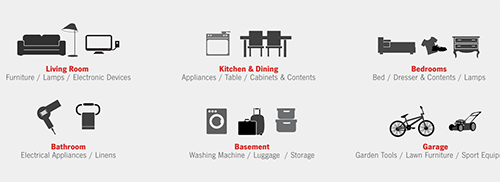Creating a Home Inventory: With Josh London!

Home is where the heart is! And so are your television, appliances, furniture, and private possessions. Out of all the investments you can make throughout your life, a home is going to be a top item, if not the most important asset you have. Therefore, it is only natural to want to protect everything or at least keep it on record, just in case. Josh London of State Farm Insurance, right here at The Villages Town Center, shares his insight on how you can digitally create a home inventory for such an occasion.
Imagine that there is an unfortunate event that claims your home and possessions. Now think about how stressful it would be to sift back through all your records to try and accurately document what was in your home. Sounds like quite the ordeal, right? Worry not, as your friendly insurance agent Josh London has the tips you need to create your inventory!
So, many of you might be asking, “Why do I even need an inventory of my home or apartment?” The answer is simple. It involves you having, as Josh puts it, “A way to help make home insurance or renters insurance coverage after the event of theft, damage, or loss of possessions.” Having something on file that insurance agencies can look at that lists out all your assets in one place helps make things a lot easier for both parties involved. It also helps you in the settlement of a covered loss or claiming one. A home inventory also helps you determine what kind of coverage you need and how much is necessary to make sure what is lost can be reclaimed.
Now you are probably saying to yourself, “Okay that makes sense, it’s good to be covered. But where do I start when it comes to making a home inventory?” According to Josh’s expertise, it is all about balancing what you own now and any little changes that come along the way. This is especially true with people looking to move to communities like Brunswick Forest and start a better life.
First off, there are three different kinds of inventories you can create to log your assets. If you are old-fashioned, then a written inventory may work best for you. The classic home inventory should catalog your belongings and include detailed item descriptions. This includes make, models, serial numbers, value, and other purchase data. All that is needed here is a simple spreadsheet or pre-made inventory checklist.
A digital inventory is great to use for convenience, and there are even apps you can download for iPhone or Android devices. You can use it to upload a photo of an item complete with all the details for easy cataloging.
Visual records can also be created as they show proof of ownership. This can be thought of almost like a picture scrapbook, where each item is photographed on a walk-through of your home and documented with the appropriate details.
Once you decide on the kind of home inventory you want to create, it is just a matter of making sure everything in your home is documented to keep the process rolling smoothly. If you have a basement, garage, shed, attic or any sort of structure that contains possessions, the items inside need to be cataloged accordingly. Your most valuable possessions are what should demand the most attention, however. Antiques, art, jewelry, electronics and other important items need to be given special care. If you have any questions you need to bring them up to the insurance agent sooner rather than later.
Here are few extra tips to help you get started:
- Record your possessions as you pack and move into a new home.
- Pick one area at a time to record and keep it organized.
- If there is any important information you feel someone should know, record it.
- Record the number of each type of clothing when documenting your wardrobe.
- Include any stored items in your home, including assets kept in an outside storage unit.
- Take lots of pictures.
- Take video.
- Record any recent purchases you have made.
Simply following these tips can get you on the easy street to creating the perfect home inventory. If there is one thing that Josh London loves doing it’s giving help to those in his community or looking to move sometime soon. We feel that making the effort to protect your assets and possessions now may save you considerable time, money, and headaches further down the line!






